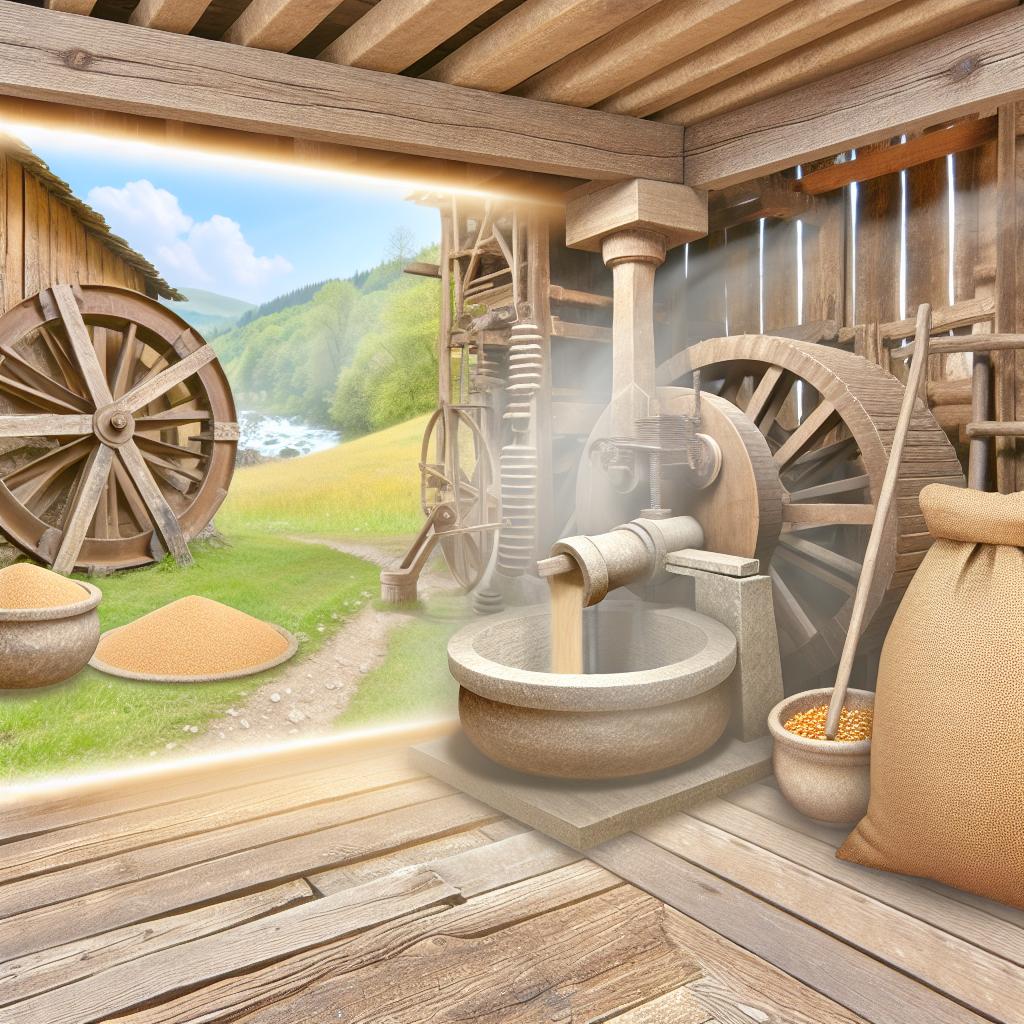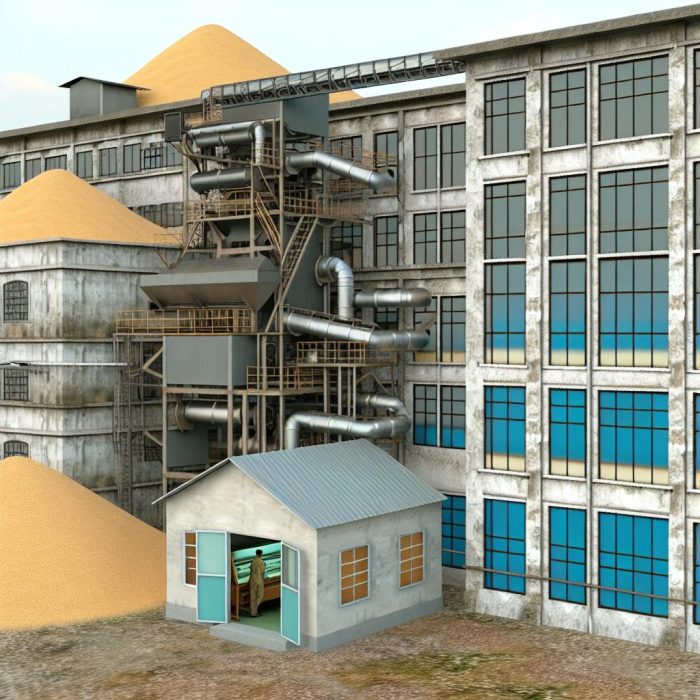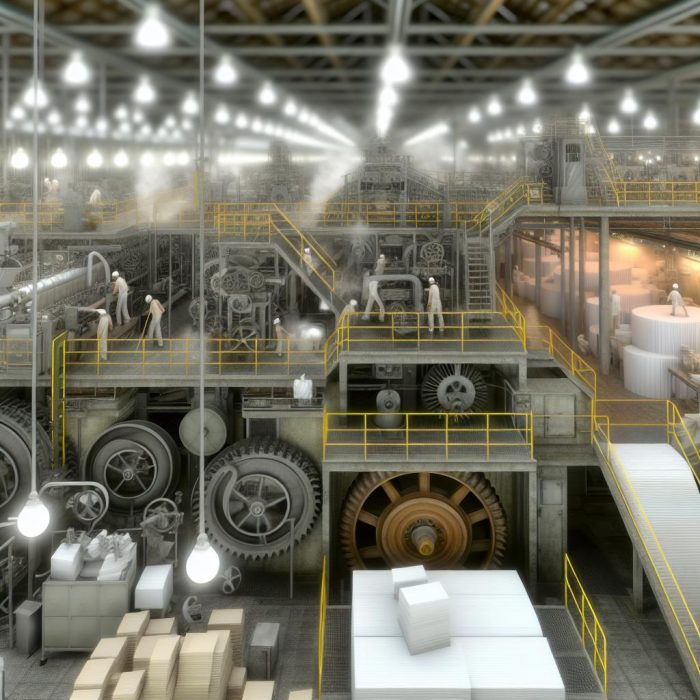Introduction to Flour Mills
Flour mills are essential facilities where grains are ground into flour. These mills have been pivotal in food production across the globe, enabling the creation of staple foods such as bread, pasta, and pastries. While the fundamental purpose of flour mills has remained unchanged, advancements in technology have significantly improved their efficiency and capacity.
History of Flour Milling
The art of milling can be traced back to ancient times. Early methods involved hand-grinding grains using tools like stones. The advent of the water mill during the Roman era marked a significant shift, allowing for more efficient processing. By the time of the Industrial Revolution, milling underwent another transformation with the introduction of steam power, further enhancing production capabilities.
In ancient civilizations, grains were a fundamental part of the diet, necessitating a reliable means to convert them into usable flour. The earliest milling methods were rudimentary, involving a simple hand tool or a stone to crush the grains, which was labor-intensive and time-consuming. The invention of the water mill alleviated some of this burden by using flowing water to turn a wheel, which in turn rotated grinding stones. This innovation greatly increased the amount of grain that could be processed with far less manual effort.
The leap in milling technology during the Industrial Revolution was remarkable. As steam power became more prevalent, it was applied to flour milling, facilitating the development of larger and more efficient mills. This technological advance allowed mills to operate independently of natural water sources, paving the way for the growth of urban centers with abundant food supplies. The ability to produce flour more rapidly and efficiently was a key factor in supporting expanding populations and urbanization during this period.
Types of Flour Mills
Today, flour mills are categorized primarily based on the source of their power and the scale of production. Below are the main types of flour mills used in modern milling:
Stone Mills: These are traditional mills that use large stones to grind grains. While they have largely been replaced by modern techniques, some artisanal and organic mills continue to use stone, arguing that it preserves the grain’s natural flavor. Stone milling is often seen in smaller, localized settings where maintaining the authenticity and nutrition of the grain is prioritized. It involves large stones that crush and grind the grain, staying true to ancient methods while adding the benefit of improved technology to ensure consistency and quality.
Roller Mills: This type dominates the industry today. Roller mills use cylindrical rollers to crush and grind grains, which allows for a more refined end product. These mills are especially popular in industrial settings due to their high efficiency and ability to produce a consistent product. Roller mills employ a series of rollers that progressively crush the grain. The adjustment of these rollers allows operators to control the texture and fineness of the flour produced, making it exceedingly versatile for different food processing needs.
Hammer Mills: Often used for coarser flour or breaking down grains before they enter a roller mill. Hammer mills operate with high-speed rotating hammers. This method is more suited for creating coarse flour or grist and is favored for products that do not require fine sifting. The design of hammer mills enables them to handle a wide variety of grains and produce different types of flour used primarily in animal feed and similar applications.
Innovations in Milling Technology
The milling industry continues to innovate, driven by needs for efficiency, sustainability, and improved product quality. Recent developments have focused on several key areas:
One major innovation is the transition to automated milling processes. Automation reduces human error, enhances safety, and improves overall production quality. Machines equipped with sensors and advanced controls can manage the entire process from grain cleaning to grinding to packaging, ensuring each step is optimally executed. These automated systems not only enhance efficiency but also ensure consistent quality across batches, essential for large-scale production.
The separation of grain components has also seen technological advancements. Modern milling machinery can now differentiate between the bran, germ, and endosperm of grains more precisely, allowing for the production of varied flour types that cater to specific dietary needs and preferences. Such sophistication enables the creation of specific blends for health-conscious consumers or specialty markets.
Additionally, many modern mills are incorporating smart technologies that integrate real-time data analytics. By analyzing production data, mills can optimize their operations to reduce waste and improve yield. This technological infusion provides a dual benefit: lowering production costs while simultaneously enhancing sustainability metrics.
Sustainability in Flour Milling
Sustainability is becoming a focal point in the industry. Many mills are investing in renewable energy sources such as solar and wind power to reduce their carbon footprint. This shift reflects a broader industry trend towards minimizing environmental impact and enhancing operational efficiency through sustainable practices.
Mills are increasingly scrutinizing their energy consumption and waste output. By employing renewable energy, such as solar panels or wind turbines, they can significantly reduce reliance on non-renewable resources. Besides reducing their environmental impact, this transition to clean energy often yields financial benefits through reduced energy costs and sometimes government incentives.
Apart from energy, there is a growing emphasis on sustainable sourcing of grains. Mills are forming partnerships with local farmers who practice environmentally friendly farming techniques, such as reduced pesticide use or organic farming methods. These relationships foster a supply chain that supports environmental health and provides consumers with quality products that align with their values.
Conclusion
Flour mills play a crucial role in the food supply chain, converting grains into a versatile product used worldwide. As the industry faces challenges such as climate change and a growing global population, innovation and sustainability will likely shape the future of flour milling. By adopting new technologies and sustainable practices, the milling industry is poised to meet these challenges effectively while continuing to provide essential products for global populations.
The ongoing evolution in flour milling practices signifies an industry committed to meeting the changing demands of society. Consumers increasingly seek products that are not only high in quality but also produced in a manner that respects the environment. Flour mills, with their long history and ongoing innovations, are well-equipped to continue playing a vital role in feeding the world.
For more information on this topic, you can explore sources like The Grains Council.



